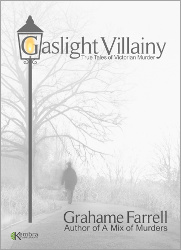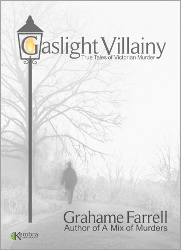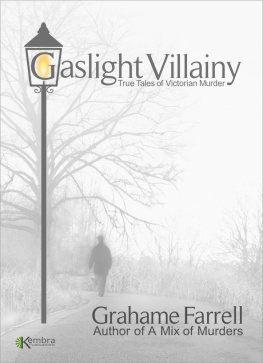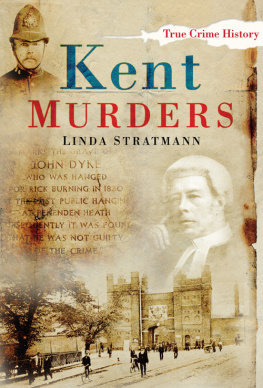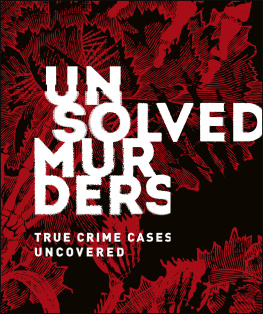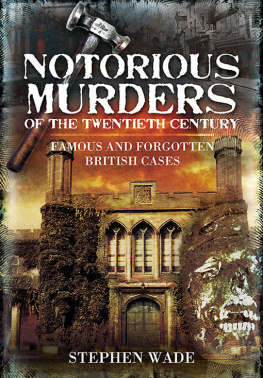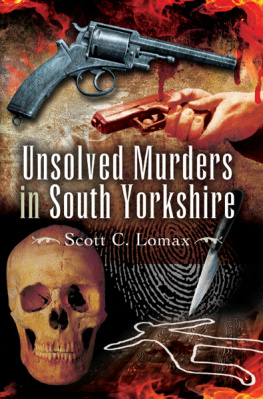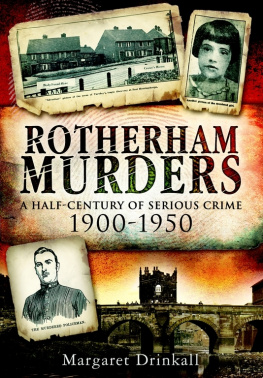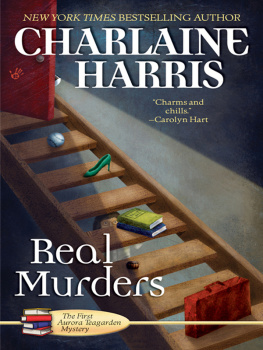Praise for Grahame Farrell
A Mix of Murders is an e-book released for Kindle [in May 2012] that features British murder cases from the twentieth century, from the early years of the century to the 1980s.
Author and librarian Grahame Farrell covers a really interesting mix (as the title suggests) of 15 crimes. The latest crime in the book is a chapter on Kenneth Erskine, known as The Stockwell Strangler who murdered elderly people in South London in the 1980s. This is a particularly disturbing chapter as Erskine was simply so brutal and dangerous. His victims so vulnerable.
Another intriguing case is the 1955 murder of Elizabeth Currell in the quaint and respectable commuter village of Potters Bar, South Hertfordshire. Mrs Currell was on her regular evening stroll on the local golf course when she was brutally attacked and murdered.
I enjoyed this book because the murder cases are ones that are lesser known and have a touch of Midsomer Murder to them. The book is Farrells true crime debut and its definitely worth a read.
truecrimereader.com
...Fascinating studies of human behaviour. Each story is well written and detailed, and progresses logically through the crime, arrest, trial to the final outcome. It was a book I enjoyed reading.
capitalpunishmentuk.com
Also by Grahame Farrell
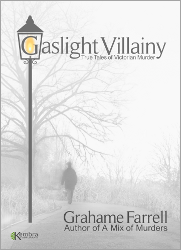
Gaslight Villainy: True Tales of Victorian Murder
Dedicated to my father, Ken Farrell of Overton, near Wrexham
A Killing for Christmas
It is hard to say what possessed Kathleen Fish to marry John Stoddard Breaks; perhaps it was the fear all too common among women in the early decades of the last century of being left on the shelf and unprovided for, but if so, Kathleen (known as Kitty) was selling herself short. An attractive some would say beautiful brunette, she was certainly in a position to shop around for a more compatible partner. She also had a job, admittedly only as a mill-worker, but enough to enable her to indulge her main hobby, or more accurately, her main passion, namely visits to the local dance-halls. Her most likely motive for early marriage is that it provided the unconventional and untamed Kitty, at the age of eighteen, with the opportunity both to free herself from parental restriction and to nourish her rather adolescent yearnings for fairytale romance, even if it meant choosing an unsuitable partner.
Not that there was anything unsavoury about her husband; he wasnt unfaithful or violent, merely a little conservative, and as a motor mechanic he was although only in his early twenties earning enough to provide for her domestic needs adequately if not comfortably. It was simply that they had nothing in common, and had conflicting views on most subjects, including his wifes immodest, not to say extravagant, entertainments bill. The disagreements developed into quarrels which became more and more unsavoury.
So aware were the couple of their incompatibility, and the mistake they had both made, that they decided straight away on the highly unusual course of keeping the marriage a secret and not living together, rather than go through the unpleasantness and embarrassment of an immediate divorce; Mrs. Breaks continued living at her parents cottage at Ryecroft Farm in Dudley Hill, a rural suburb of the Yorkshire city of Bradford, while her husband lived in the city itself. Kittys parents remained totally ignorant of their daughters marital status.
Mr. Breakss work took him around the country; in October 1917, four years after the clandestine wedding, he was living and working in Birmingham when he and his wife suddenly decided to make the marriage public and to try to live together. Ignoring the anger of her parents, who were furious that the marriage had been kept secret from them for so long, Kitty Breaks, with the approval of her husband, took a house in Eccleshill, Bradford which might serve as their marital home. Mr. Breaks, still based in Birmingham, returned home at weekends to be with her. They lasted four months together before John Breaks decided he had had enough of married life and bought a garage of his own in his native Bridlington, on the Yorkshire coast. Although the young couple continued to meet occasionally, and remained on friendly terms, the marriage, such as it was, was now over. Kitty made peace with her parents and moved back into the cottage in Dudley Hill.
She reviewed her situation and decided firstly that a lifetime spent working in a cotton-mill was not for her; accordingly, she got a job as a shop-assistant with a sheet-music company and began acquiring secretarial skills.
As regards the equally-important matter of romance, she realised that there was no need for her to repeat the hasty and foolhardy decision which had led to her farcical marriage. Her attractiveness to men enabled her now to go through a succession of well-heeled lovers, each of whom was more than willing to give her expensive gifts as well as money to supplement her income as a shop-assistant. Doubtless she would have been mortified to be described as a prostitute, even a high-class one, but certainly the men in her life needed well-filled wallets in order to enjoy her company, and, judged by the moral standards then expected of women, few of her contemporaries would readily have described her as respectable. Be that as it may, her pleasant disposition made her well-liked by all who met her. Stylish, always beautifully dressed, very popular with the opposite sex, and with no children to provide for, she now found herself with sufficient money to allow her to live more comfortably than ever before. Her regular visits to local dance-halls continued unabated, and, in accordance with her footloose nature, she took to spending her weekends in seaside hotels, in an era when such places were fruitful hunting-grounds for affluent single men in search of (preferably upmarket) female company; out of her depth socially in such a milieu, she made up for it in physical attractiveness and naive charm. Bradford ceased to have any appeal for her, and in 1918 she took a new job as a book-keeper and typist in the north-eastern industrial town of Middlesbrough hardly salubrious, but offering easy access to the coastal resorts of the East Riding and their numerous hotels.
In July, 1918, she was enjoying a short break in the West Lancashire resort of Lytham (in a hotel, of course) when a man with a trim moustache engaged her in conversation; he introduced himself as Frederick Holt. Mrs. Breaks was more than used to the attentions of men with money and a modicum of breeding, but the tall and handsome Mr. Holt seemed a cut above even her usual admirers; a 30-year-old former territorial army lieutenant from Fairhaven, near Lytham St. Annes, he had class, money, good looks and charm. Kitty, although accustomed to calling the shots in her love-affairs, was swept off her feet. Mr. Holt concluded their conversation by asking if he could see her again, and Kitty, withholding from him the fact that she was technically a married woman, promptly consented. It was a dream date for her they went dancing.
Without doubt, ex-Lieutenant Frederick Rothwell Holt known as Eric was socially a good catch; the progeny of an upper middle-class family, he had had a private-school education and had worked as a bank clerk and insurance agent. Called up at the outbreak of the First World War, he had served with the 4th Loyal North Lancashire Territorial Regiment in the rain-soaked trenches of Festubert on the Western Front. Here he had suffered shell-shock, and had been invalided out of the army. After convalescence, he had worked for a British firm in Malaya before returning to Lancashire where, with money in the bank and an unearned inherited income of 500 a year, he had resumed his pre-war pursuit of pleasure in the rarefied social world of the countys wealthy classes, among whom he was extremely popular, if at times excitable and a little overbearing. As an enthusiast of sport (especially football), he was popular in male company; with his good looks and military background, he was equally well-liked by women, and had many amorous affairs.

